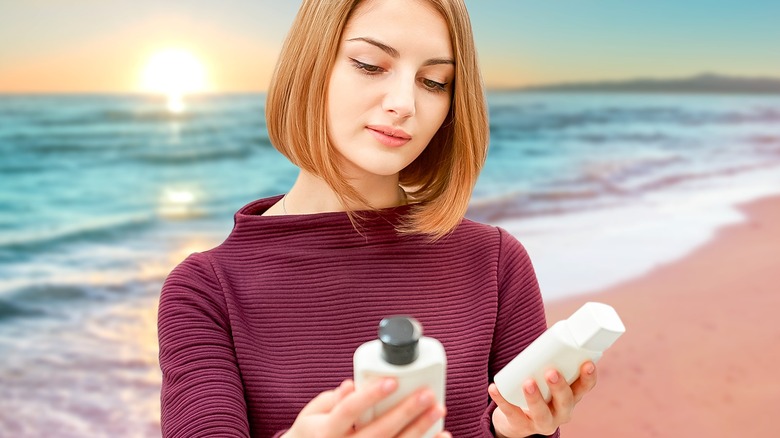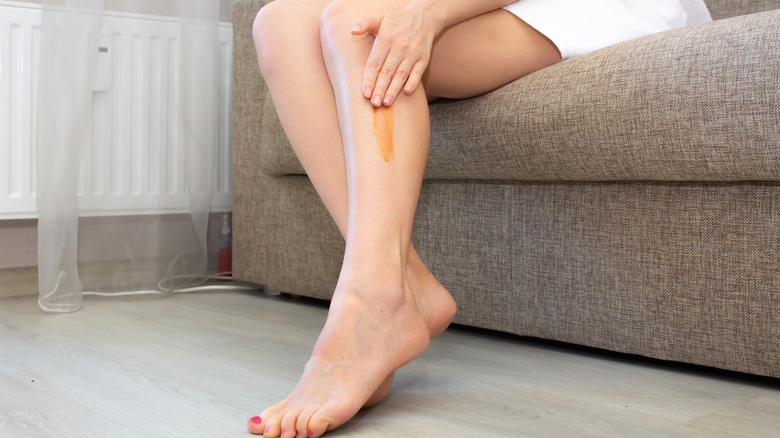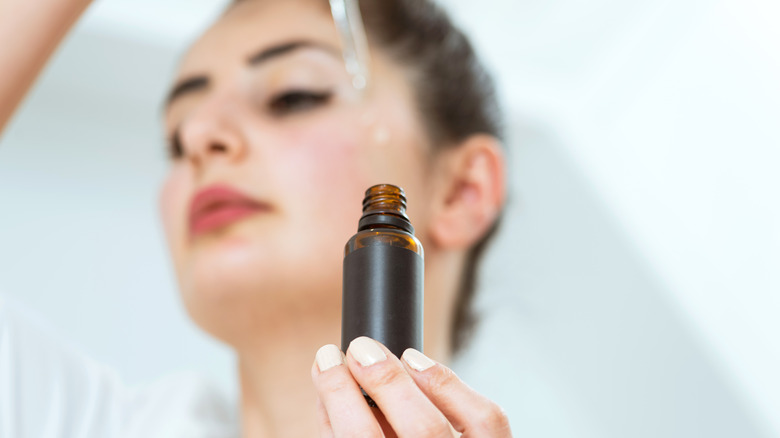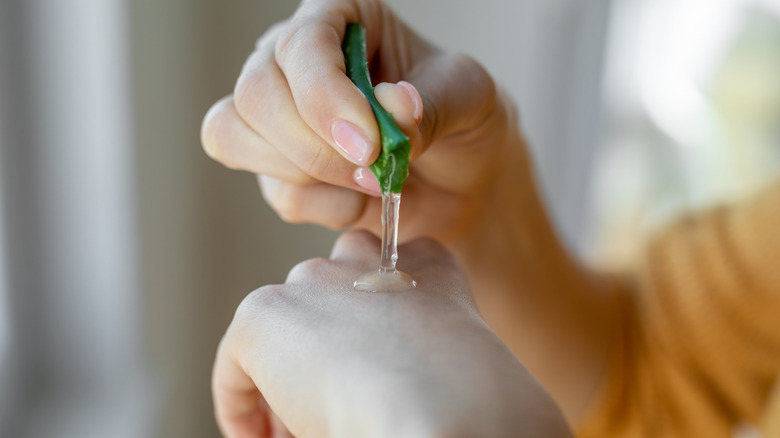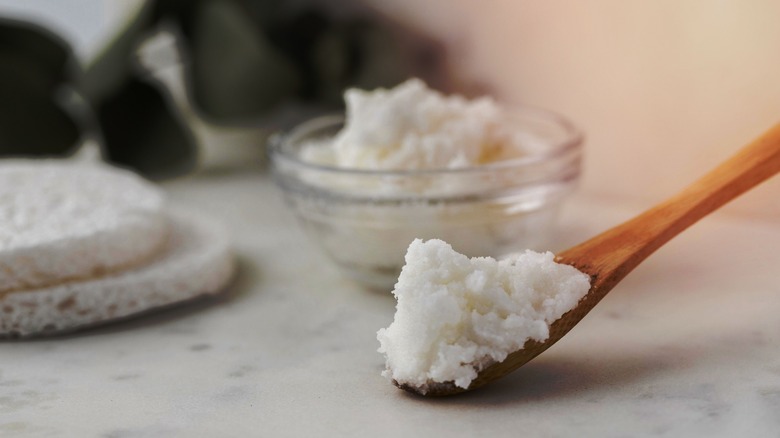Ingredients To Look For When Choosing A Gradual Self-Tanner
Self-tanner is a great solution if you're craving that desirable bronze glow but are concerned about sun exposure or don't have much time on your hands for leisurely beach lounging these days. If you've ever had a spray tan mishap before an important event and definitely don't want to risk reliving that scenario, playing it safe and trying something more subtle – like a gradual self-tanner – is a wise move.
But when it comes to choosing a self-tanner, the massive number of options out there can feel daunting. And you don't want to gamble with a product that might leave your skin patchy and uneven in tone. While you always want to choose products with quality ingredients when it comes to the health of your skin, the main ingredient in most self-tanners is DHA or dihydroxyacetone (via Annales de Dermatologie et de Vénéréologie), which is responsible for browning the skin. If you want to take the gradual approach to a golden glow, then you'll want to choose a product with lower amounts of DHA. However, there are more ingredients to look for when choosing your next gradual self-tanner.
DHA
You'll want to make sure that the self-tanner you choose is, in fact, gradual and contains lower levels of DHA. You'll notice your skin darkening after you've applied the product and the process behind what's happening is actually pretty fascinating. "A sugar-derived active produced by a natural fermentation process, DHA reacts with amino acids in dead skin cells in the surface layer of the skin," product scientist Alexa Dinant told Coco and Eve. "A chemical reaction takes place and compounds called melanoidins are formed. These brown pigments color the skin in a way that mimics a tan."
Some have reported an odd smell left on their skin from the DHA in self-tanner (via Jergens), so don't be alarmed if you notice an unfamiliar scent. It should subside within a few days. It's key to keep in mind that while your skin looks darker, you aren't more protected from sun exposure now than you were prior to the self-tanner and it'd be a mistake to skip the SPF. You'll still want to apply sunscreen, wear hats, and take your usual sun protection measures.
Hyaluronic acid
You've likely heard some hype around hyaluronic acid in recent years when it comes to skincare and with good reason. You may even already be using a hyaluronic acid serum in your skincare regimen and noticing the beautiful results of this awe-inspiring, magic ingredient. Plumper, more vibrant skin is typically expected as hyaluronic acid allows the skin to retain more water (per Molecules). And don't be scared away by the 'acid' piece of the name -– the ingredient is more like a light gel.
Hyaluronic acid is also super hydrating and in terms of self-tanner, extra hydration means an extra long-lasting tan (via St. Tropez). Without healthy and hydrated skin, your tan will likely look uneven and patchy after applying self-tanner and that is certainly not the goal here. So, opting for a self-tanner with ultra-hydrating ingredients like hyaluronic acid will ensure a smoother tan, sans streakiness –- plus the added hydration boost will leave you extra glowy.
Aloe vera
If you've ever used a piece of an aloe vera plant to soothe a sunburn or insect bite, you know what a relief it is to feel the cool gel of the versatile, healing plant on your skin. With around 98 percent water content (via Molecules), the aloe vera plant is obviously highly hydrating which, as we now know, is key when it comes to a smooth and even tan from a gradual self-tanner.
The perks of selecting a self-tanner with aloe vera are many. Not only are you achieving the golden goddess glow you're seeking, but you're also nourishing your skin with an anti-inflammatory plant that even stimulates the immune system. You may even find that adding aloe vera to your standard skincare routine apart from the self-tanner is a smart avenue to take -– both in the warmer months when you spend more time in the sun and in cooler weather when your skin may become dry due to the elements.
Shea butter
Taken from the nuts of the shea tree, shea butter is also known for its super hydrating and healing abilities. You'll find it in many anti-aging products due to its antioxidant properties and ability to amp up collagen production (via Healthline). While you've likely long known of the benefits of shea butter, you may not have heard that it also offers a small amount of sun protection –- an SPF of around three or four. While it can't be used in place of an actual sunscreen, it sure is a great ingredient to find listed on your self-tanner.
There are some caveats, however. The American Academy of Dermatology has stated that shea butter may result in clogged pores, making it potentially unsuitable for use by those with acne-prone skin. As always, doing a small test patch of any new product on the back of your wrist is wise, in case you might have a reaction to the self-tanner. Additionally, while shea butter likely won't trigger an allergic response, other components of the self-tanner could do so. "Any number of topical products, including sunless tanners, may contain active and inactive ingredients that can provoke an irritant or allergic contact dermatitis, so it is important to first test any new product before applying it more broadly," Jeremy Brauer, MD a New York City-based board-certified dermatologist, explained to Allure.
